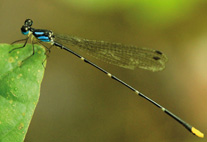Abstract
Twenty-two species of Maeridae including the new genus, Leeuwinella, and eight new species are described from Indo-Pacific waters. Leeuwinella mistakensis gen. et sp. nov. from southern Western Australia has dorsal carinae and serrate epimeral margins on pleonites 1–3 and mandibular palp article 3 concave; this significant combination of characters justifies erection of a new genus. Elasmopus coxacallus sp. nov., with a castelloserrate posterior margin of pereopod 7 presents a novel character for the genus, which contains over 100 described species. Elasmopus incomptus sp. nov. and E. norfolkensis sp. nov. are also described from Norfolk Island, South Pacific, while new distribution records are provided for E. gracilis Schellenberg, 1938, E. integer Myers, 1989, and E. molokai J.L. Barnard, 1970 from northwestern Australia, and E. souillacensis Appadoo & Myers, 2003, from the Kermadec Islands. New distribution records for Maeropsis griffini (Berents, 1983) from Bedout Island in Western Australia are the first of the species outside the Queensland type locality and new records of M. thetis (Lowry & Springthorpe, 2005) from mainland Australia to Tasmania and across the Tasman Sea extending its range. Pseudelasmopus walkerae sp. nov. is described from Norfolk Island, and is the second species recorded in the genus, previously known only from Mauritius. Lastly, three new Quadrimaera species, Q. gregoryi, Q. brownorum and Q. vallaris, along with eight known Quadrimaera species, are reported from various locations extending their distributions in the Indo-Pacific.

